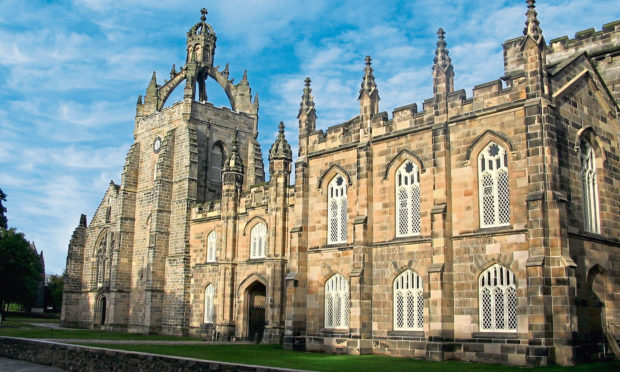This is a year to celebrate at the University of Aberdeen. Today we reach our landmark 525th birthday and are launching a new vision which aims to ensure the University plays its part in supporting some of the biggest challenges facing today’s world.
As an ancient university – one of just five which existed in the UK at our foundation in 1495 – we’ll be building on our history and heritage by forging new and original ways forward. The university has led innovation from its earliest days and, in planning for our next 20 years, we’ll display the same foresight shown by our founders.
When William Elphinstone sought permission to open a university in the north of Scotland five and a quarter centuries ago, he aimed to establish an institution that would be open to all and dedicated to the pursuit of truth in the service of others. That purpose and that principle continues to guide us today and we’ll be achieving it through education and research that is inclusive, international, interdisciplinary and sustainable.
Elphinstone sought to draw in the best and brightest educators and was open to the appointment of anyone with talent.
Talent, in any age, is essential to the success of our society. At the University of Aberdeen we recognise that being inclusive must be at the heart of all we do and so we are striving to break down barriers to higher education. To do this, we will offer fair and flexible routes to higher education, diverse qualifications and will support the health and wellbeing of both our students and staff to help them achieve their full potential.
This principle of inclusion also extends to working with community groups, public organisations and businesses.
When establishing a model for Aberdeen, Elphinstone looked outwards to the great universities of Europe. This international spirit underpins our institution today. Aberdeen already ranks among the very best in the sector for global outlook but we do not rest on our laurels and that is why our 2040 strategy sets out to develop, build on and enhance our international presence.
We are a university with 5,000 international students from 130 nationalities, have 1,200 international members of staff drawn from 86 countries and can count 100,000 alumni in 170 different countries. Over the next two decades we will grow this further both through our campuses here in Aberdeen, our Qatar campus and through our ever-growing global networks.
In pursuing the third of our strategic themes, increased interdisciplinary research and education, we can again learn lessons from our past. Elphinstone was a man whose own learning spanned many spheres – he was not only an ecclesiastic and a scholar, he was also a notable lawyer and senior diplomat.
His words that the university should pursue truth in the service of others, endows us with the responsibility to address the challenges that will affect all of us now and in the future. To do this, we must combine our research and teaching expertise across our full range of disciplines. Our staff and students came together to identify five areas where the university’s strengths can be brought to bear on global challenges. These are: energy transition, health, nutrition and wellbeing, data science and artificial intelligence, environment and biodiversity and social inclusion and cultural diversity.
Already in Aberdeen, researchers from across a diverse range of subject areas are working together to explore how we can improve the diagnosis and treatment of diseases, feed a growing global population, protect our marine resources and reduce carbon footprints, contributing to the great societal, global and industrial challenges of our time.
The university – as it did at its foundation – also continues to play a significant role in the prosperity and culture of our region and the civic life of Aberdeen. We cannot forget that we were founded for the good of the area which we serve and, as an institution, we recognise that it is our responsibility to encourage and help our community to work and live sustainably, educating and equipping both our students and staff, to be leaders in energy transition here in the north-east and across the world.
We are committed to achieving net zero carbon emissions before 2040 and will continue to invest in the people, ideas and actions that will help us all to improve sustainability.
Today we will sign the Sustainable Development Goals Accord, a global charter backed by universities around the world to support the SDGs through research, teaching and operational activities.
As we mark our 525th birthday, we will be celebrating all that has been achieved at the University of Aberdeen such as our Nobel Prize-winning work on the development of insulin, advancements in molecular physics which underpin much of the mobile technology we take for granted today, and the development of the MRI scanner.
Our Aberdeen 2040 strategy will drive our successes in the future and the University of Aberdeen will continue to generate the pioneers and trailblazers who have made such a positive difference to the lives of people here in the north-east and across the world.
Professor George Boyne is principal and vice-chancellor of Aberdeen University
